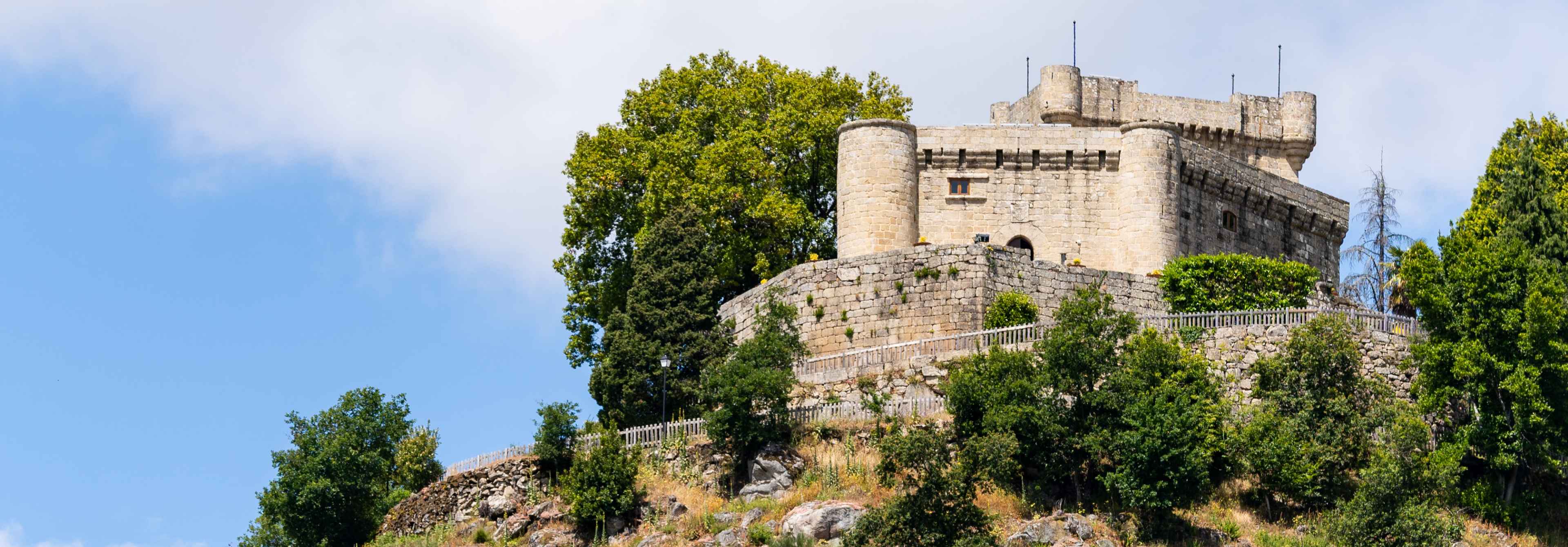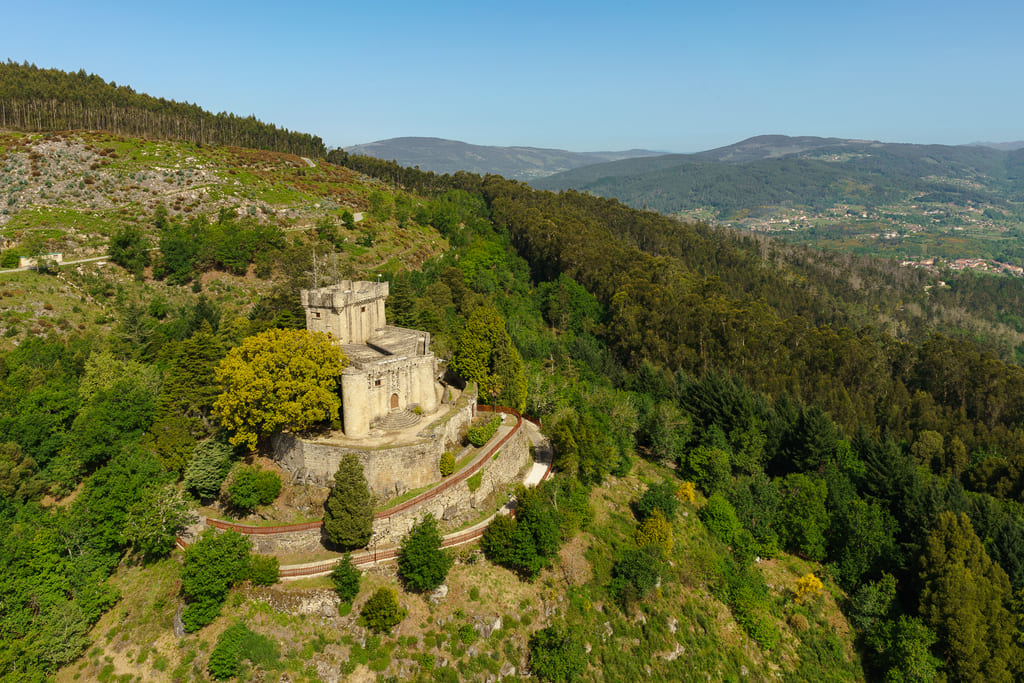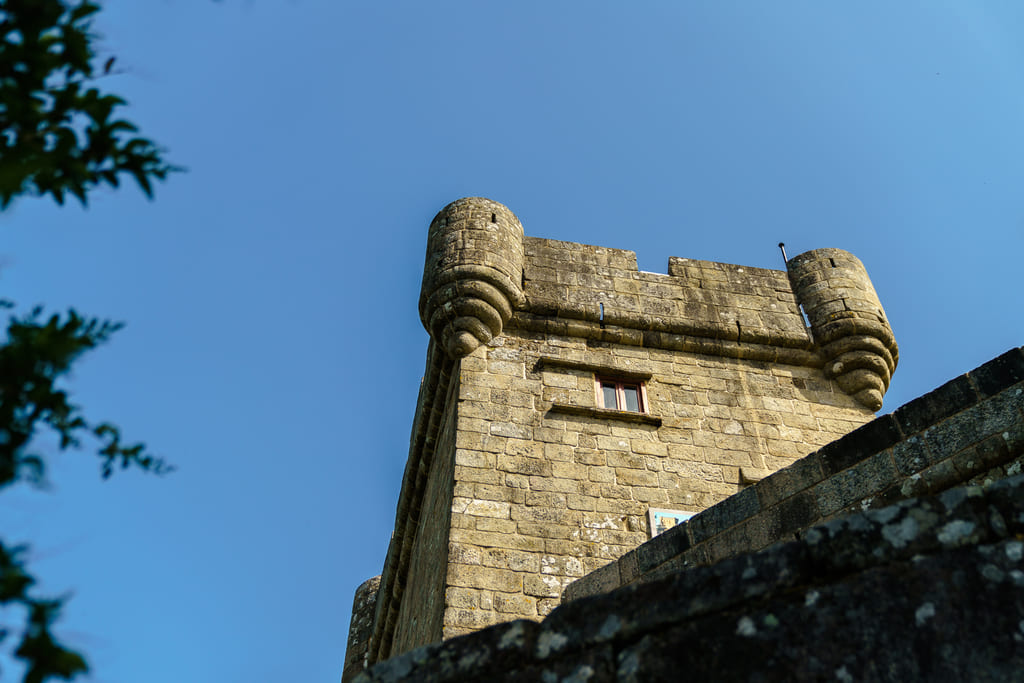THE FORTRESS
The castle, once in ruins and now showing a renewed image— surrounded by exuberant greenery and an unique landscape about which Emilia Pardo Bazán, who considered herself the discoverer of its ancient ruins, said: "Sobroso is a war castle, a defensive keep that dominates over the region, and scans a vast area of the country from its windows. Symbolic laurel trees grow as a dense shrub on its double redoubt, under the warmth of the sun. From its windows, hanging on the walls of the floorless rooms, a majestic landscape can be watched, reaching the distant mountains on Portuguese soil”.
The castle has now a very different appearance thanks to the various interventions it has undergone since the early 20th century. The last one, carried out by the Pontevedra Provincial Council, gave the castle a look similar to the one it had when it was called “the strong key of the Kingdom of Galicia”. Travelers following the road from Ourense to Vigo —just 7 km away from Ponteareas— will see the castle rising proudly on its promontory, reminding us of the violent times in which fortresses such as this one scattered the landscape; times when they were a stage for feudal wars over territorial power.
Sobroso Castle occupies a prominent space, sitting on a rocky promontory, halfway up the eastern slope of Mount Landín. It rises in the centre of an ample semi-circular amphitheatre with a radius of 8 to 12 km from the castle itself.
There are very few remains from the first Romanesque fortification. It was possibly a simple construction composed of a main tower, and surrounded by a wall and a defensive moat. This fortress, destroyed in the Great Irmandiña War, was rebuilt later, towards the end of the 15th century, keeping the oval and irregular shape of its outer curtain wall. The wall was reinforced with a square turret in the northwestern corner and moved outward to gain space on the southeastern corner, with two protrusions flanking the south and east sections, where the entrances are.
The condition of the fortress deteriorated significantly, and it did not rise again until the interventions carried out by Alejo Carrera first, and the Ponteareas City Council after, in 1981.
Nowadays it is composed of an outer curtain wall, a main residential body and a keep; three structures laid out in successive steps that give the complex a formidable aspect.
The outer wall has a width of 1 to 2 metres and a length of less than 140 metres. The reduced space between the wall and the residential body makes it impossible to house a sizeable garrison with cavalry. The northern side keeps its original curved outline, but the rest of the perimeter has a polygonal shape with protrusions and a square turret for flanking and attacking the side of the walls. It has four embrasures on the west and south sides, where access is easier. Despite the moat being very shallow, the narrow and long path to access the wall acts as great protection against enemies storming the castle.
The residential body, with almost two-meter-thick walls, has a polygonal but irregular outline, adapted to the boulders on its surroundings. The lower of its two floors has a defensive nature, with nine exterior embrasures to station the garrison. The upper floor has large built in exterior windows.
The cylindrical turrets flanking the main gate are solid on their base to protect the construction from sapping.
The keep, located on the western side of the castle, is 12 metres long and 7 metres wide. It has a rectangular plan and a height of almost 13 metres. The main gate, on the southern side, has a round arch with two heraldic shields above it: one belonging to the noble house of Sarmiento and an unidentifiable one. Atop the keep, there are four circular bartizans; wall-mounted turrets possibly covered with conical roofs. It also has a parapet and gatehouse, two defensive elements added to this robust building. The north side, the most vulnerable, has various embrasures. The interior ashlar blocks show multiple mason marks such as tongues or scissors. Some of them are identical to the ones found at Soutomaior Castle.







